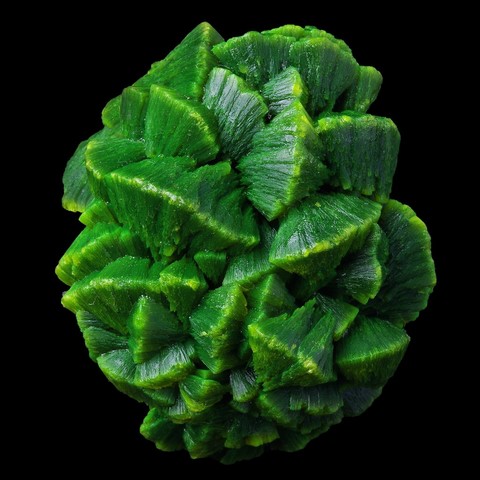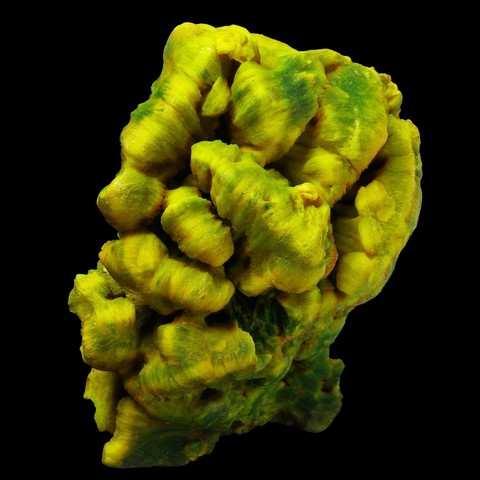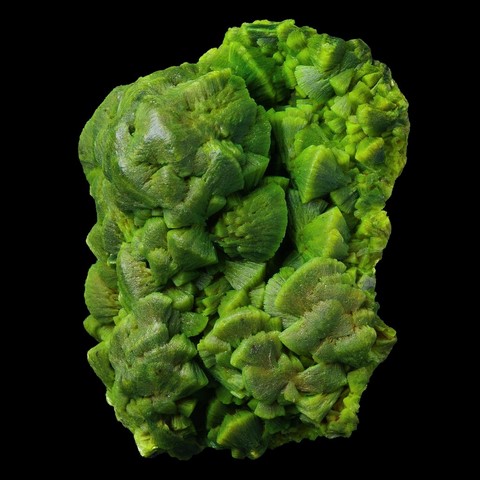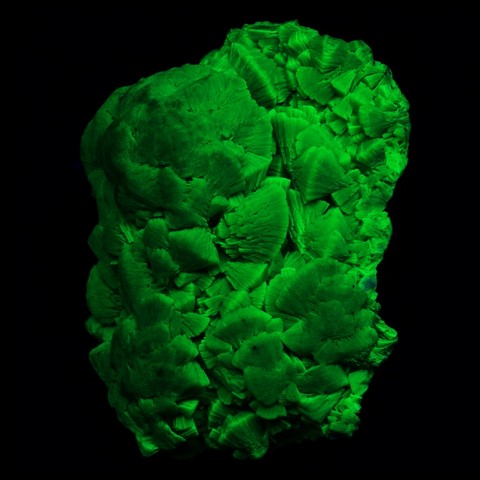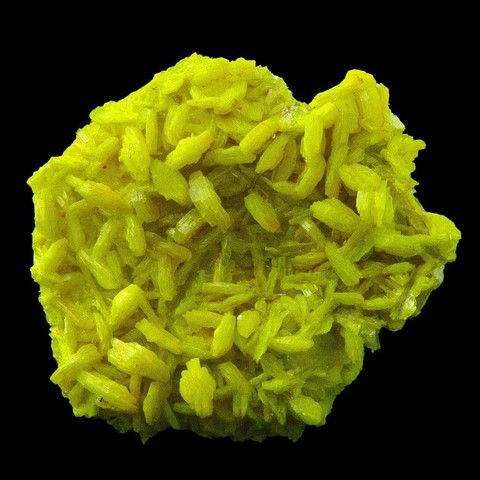AUTUNITE
Class : Phosphates, arsenates, vanadates
Subclass : Phosphates
Crystal system : Orthorhombic
Chemistry : Ca(UO2)2 (PO4)2 10H2O
Rarity : Common
Autunite is a product of the alteration of uraninite. It is the most common surface uranium mineral, abundant in the oxidation zones of uranium deposits ; it is also found more rarely in pegmatitic veins containing uranium and in some hydrothermal veins. It takes its name from the city of Autun in Saone-et-Loire (France), its locality of discovery. Autunite forms thin lamellar crystals with a square or octagonal shape, but is often found in scaly masses, flakes, laminated surface incrustations or microcrystalline coatings. The autunite is yellow-green, changing to lemon yellow to sulfur yellow by dehydration and transformation into meta-autunite. It is a radioactive mineral that reacts very strongly to UV with a very characteristic green fluorescence. Autunite is an important uranium ore. It is also popular with collectors.
Main photo : Autunite from Nanjingqiao U deposit, Pingjiang Co., Yueyang Prefecture, Hunan Province, China
Autunite in the World
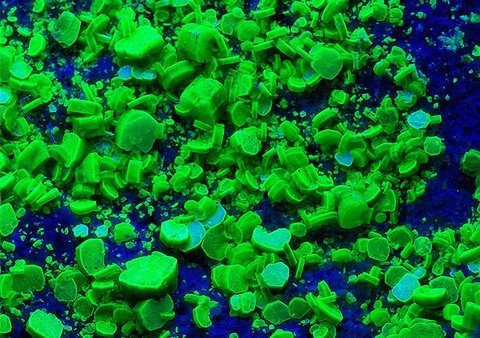
Autunite in France
Autunite is quite common on the French territory, remarkable centimetric flake crystals were produced by the uranium mines of Margnac and La Crouzille en Limousin, Ouch de Jau, near Autun in the Morvan (type locality), Kerlec'h en Lignol (Morbihan) and perhaps especially the veins of Lachaux (Puy-de-Dôme) and Huis Jacques (Bourgogne) which gave crystals of 2 cm lining decimetric surfaces. We also find the autunite associated with smoky quartz in the granitic pegmatites of Venachat (Haute-Vienne).
Twinning and special forms
Rare and unobservable in interpenetration on {110}.
Fakes and treatments
There are no fake records for this species, however most of the autunite samples are treated to prevent dehydration and thus ensure good conservation. The old specimens are often varnished, varnish that does not necessarily age very well (yellowing, cracking). Modern treatments are almost invisible, and "plasticizes" the sample. We use paraloid B72 to stabilize our autunites, it exists in ready-mixed solution to be applied directly with the brush and also in "beads" to dissolve in acetone.
Hardness : 2 to 2.5
Density : 3.05 to 3.2
Fracture : Irregular
Streak : Yellow
TP : Translucent to transparent
RI : 1.553 to 1.577
Birefringence : 0.024
Optical character : Biaxial -
Pleochroism : Medium
Fluorescence : Green
Solubility : Acids
Magnetism : None
Radioactivity : Important

